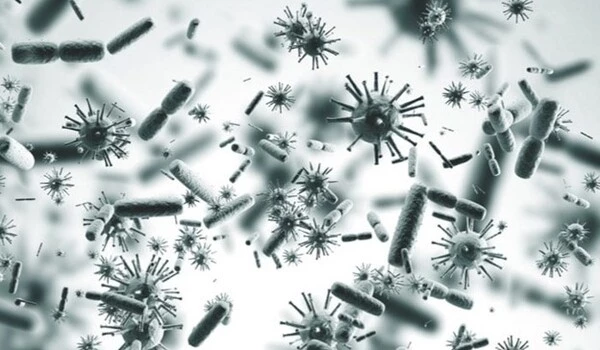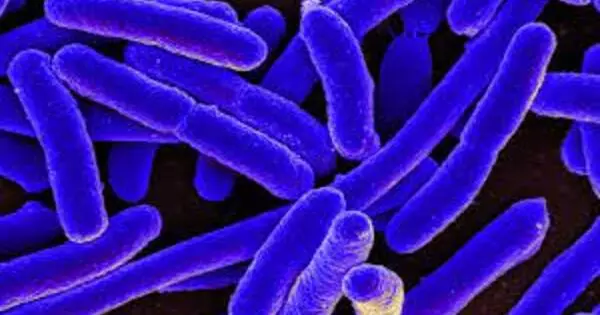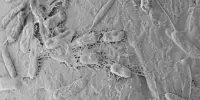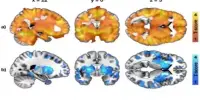Some bacteria can set off unexploded viral grenades in the DNA of neighboring bacteria. Certain Escherichia coli bacteria, including some found in human intestines, produce a substance known as colibactin. Researchers report in Nature that this chemical awakens dormant viruses within nearby bacteria, sometimes leading to their annihilation.
This type of bacterial warfare has never been described before. “It’s an interesting strategy, but it’s also a dangerous strategy,” says Heather Hendrickson, an evolutionary microbiologist at Canterbury University in Christchurch, New Zealand, who was not involved in the research.
You come into contact and swallow E. coli by eating contaminated food, drinking contaminated water or by touching your mouth with your hands that are contaminated with E. coli bacteria.
Colibactin producers must creep up on their bacterial enemies and trigger the unexploded ordinance hiding in the enemies’ DNA. Those grenades are prophages — bacteria-infecting viruses that have inserted themselves into their hosts’ DNA, where they hide out harmless and dormant until something triggers their awakening. That something, in this case, is DNA damage caused by colibactin.
It’s a signal for them to awaken from their dormant lifestyle and kill their host before moving on to find a new host. When phages awaken, they multiply and burst out of the host cell, destroying it. However, once released, these viral grenades can infect other bacteria, potentially exposing the attacking bacteria and other nearby microbes to biological shrapnel.
Heather Hendrickson
When colibactin dings DNA, a bacterial repair system called the SOS response kicks in, chemical biologist Emily Balskus and colleagues found. “What many phages have done is to tap into that response,” says Balskus, a Howard Hughes Medical Institute investigator at Harvard University.
“It’s a signal for them to awaken from their dormant lifestyle and kill their host before moving on to find a new host,” she says. When phages awaken, they multiply and burst out of the host cell, destroying it. However, once released, these viral grenades can infect other bacteria, potentially exposing the attacking bacteria and other nearby microbes to biological shrapnel.
Humans could be caught in the crossfire as well. Colibactin was already known to cause DNA damage in humans, which could lead to colon cancer. However, it was unknown why the bacteria would use the chemical against humans.

The new research suggests that E. coli may not be producing colibactin to assault its human hosts, but as a countermeasure against other microbes, Hendrickson says. “It’s easy to forget that there’s this continual conversation and warfare going on between bacteria, and we might not be the focus of their activities.”
Colibactin is not typically a lethal weapon among bacteria. Colibactin caused DNA damage in the majority of the bacteria studied by Balskus and her colleagues, but the bacteria were able to repair the damage. This could be because colibactin is an unstable chemical that degrades quickly before it can break enough DNA to cause irreversible damage, according to Balskus. Her team discovered that some bacteria produce other chemicals that defuse colibactin before it can damage DNA. In laboratory dishes, only bacteria with unexploded prophages in their DNA and no other defenses were vulnerable to colibactin-producing bacteria.
Because colibactin decays quickly, “it suggests this is a very short-range communication,” says Michael Dougherty, a microbiome researcher at the University of Florida in Gainesville who was not involved in the study. “Maybe it could have an effect when bacteria are forming biofilms where you have trillions of bacteria stacked on top of each other.”
According to Dougherty’s University of Florida colleague Christian Jobin, colibactin may not be the only factor involved in neighboring bacteria exploding. The team of Balskus did not show that colibactin alone could detonate prophages. Perhaps something else about the presence of the colibactin-producing bacterium is required to set off the fireworks, he speculates.
The researchers are unsure whether colibactin can cause prophages in bacteria in their natural environments, such as human and other animal intestines. Balskus speculates that the viruses’ reawakening could be an accident.
“Perhaps [colibactin] did not evolve to kill.” “Perhaps its primary ecological function is to do something else,” she speculates. That is a mystery that Balskus and her colleagues are attempting to solve.















